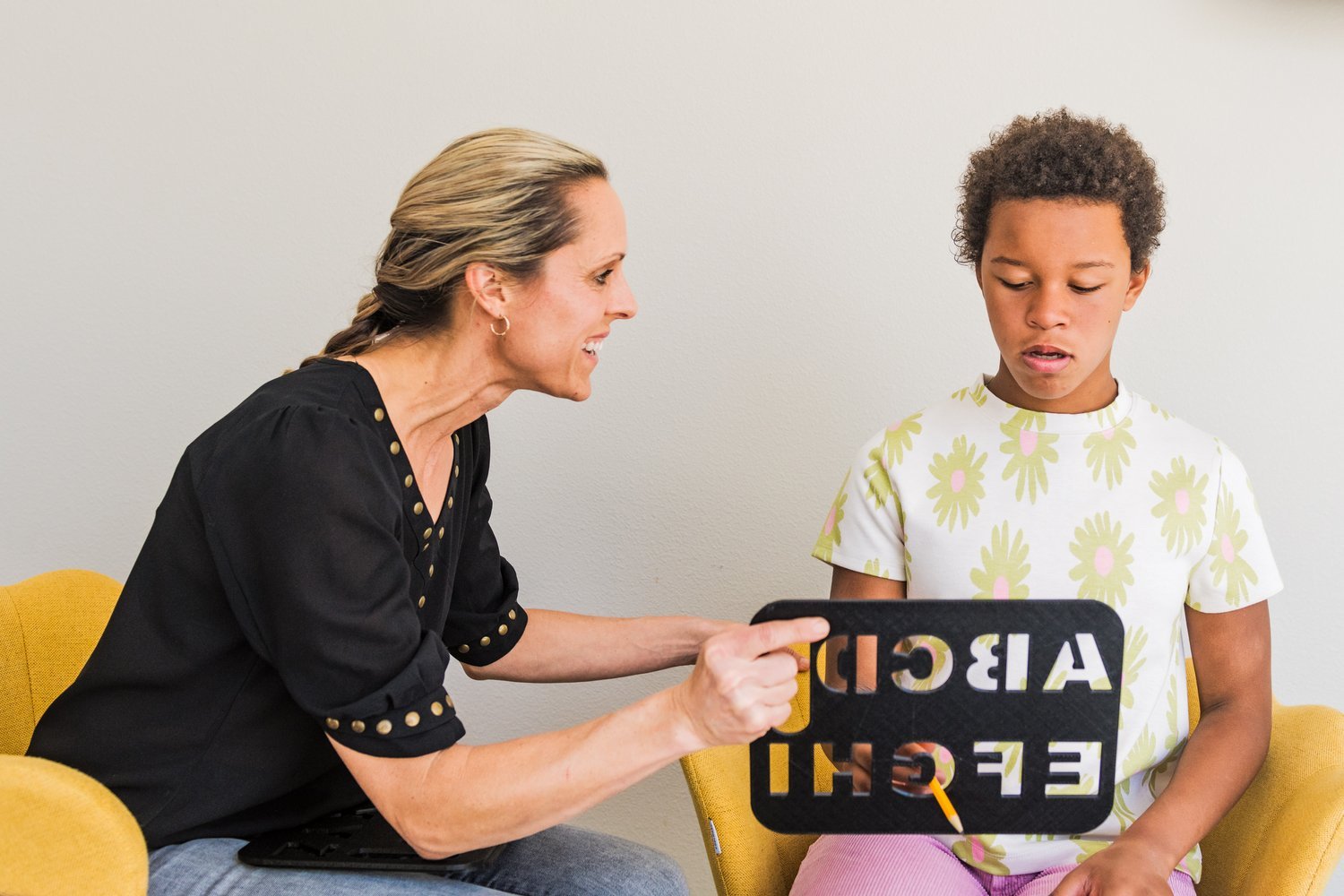
Spelling as Communication
The Spellers Method™ is a multidisciplinary approach taught to practitioners seeking to deepen their capacity to help nonspeakers. It is an educational model, curriculum, & mentorship program used to provide individualized support across a variety of sensory-motor profiles of students who spell or type to communicate.

-
The target beneficiaries of the Spellers Method are those with autism, apraxia, Down Syndrome, and other disabilities or sensory and motor difficulties.
-
The Spellers Method incorporates research and expertise from the fields of assistive technology, developmental optometry, and occupational therapy to guide each student’s unique path to fluency, from their very first spelling session through their self-determined ultimate goal. For some that means open communication on a stencil, for others it means pursuit of autonomous typing skills i.e., the goal of spelling without a trained communication partner holding their keyboard.
-
At this time, Spellers Method Practitioner training is exclusively offered to practitioners who are seeking a deeper dive into assistive technology, developmental optometry, intentional motor, polyvagal theory, and more to meet the unique needs of their students. It also teaches the Spellers Method protocol for advancing students to autonomous typing.

Communication Partner Coaching
-
Effective communication partners are essential to the process of both learning to communicate by spelling and taking communication beyond the walls of a clinic.
-
Parents and caregivers are often a speller’s first communication partner, however spellers may also want other family or friends who work with them to support their communication.
-
All Spellers Centers provide the training for parents and others to be a communication and regulation partner (CRP) for the speller. This training occurs during a speller’s private sessions or additional sessions may be scheduled exclusively for CRP training.
Intentional Movement
-
Our senses are our bodies’ means of gaining information about the environment around us, and our relation to it. That information gives us a sense of ourselves—where our body is in space, how heavy we feel, how loud we talk, our sense of balance—and then informs how we should move our bodies to do the things we want to do in our environment. Because of this, for those with sensory differences, movement difficulties often also arise in the form of dyspraxia.
Dyspraxia, or apraxia, is a breakdown in our ability to move intentionally, resulting in challenges with intentional motor skills such as speech, other fine motor skills, activities of daily living, extracurricular activities, social participation, play, etc. Anxiety, low self-esteem, and dysregulation can also occur if the client can’t successfully direct their body to complete, or even start, a desired task.
-
Successful motor planning requires developing a well-established, internal body map. This includes body awareness and having a confident sense of where the body is in space. Sensory input, aided by movement, feeds information to the sensory system so that it can build this map.
We support our clients in this process through sensory-integrated exercises. We then support the connection between the brain and body by practicing intentional movement. This practice results in more successful, autonomous motor planning and ultimately an increase in self-confidence and the ability to complete desired tasks.
-
Parents and caregivers are also taught how to understand and support their child’s abilities so they can meet their goals in other environments.
Vision & Ocular-Motor
-
We rely on our visual system for everything that we do. It is essentially our “window to the world”. We use this system to communicate, take in our environmental surroundings, and develop a strong body map to understand how our body relates to the world around us. When our visual system is disorganized, the result can affect many areas of our life.
-
Ocular motor skills are different from visual acuity. Visual acuity or eyesight refers to how well we can see. We may have sufficient eyesight, but have inefficient vision. We need efficient ocular motor skills and vision for tasks such as hand-eye coordination (spelling) or moving from one location to another. Eye tracking (oculomotility), eye teaming (binocularity), focusing (accommodation), visual motor integration, and visual perception are all necessary for success in everyday life.
-
Our Spellers Centers in San Diego and Tampa work very closely with local Developmental Optometrists who understand the specific needs of spellers. They complete comprehensive assessments, all without the need to verbally speak or even spell. If you’re new to spelling, that is the best time to be seen by a developmental optometrist! Our teams are happy to talk with you more about how to find one in your local area if you are unable to schedule a visit while you are visiting one of our Centers.
Important Components of Spellers Method
Learn Communication Through Spelling
and Typing:
Share Your Unique Story:
Everyone has a unique story. We want to know yours.
1
Experience the Spellers Method:
Begin or advance your skills in this form of communication, motor control, & regulation.
2
Attain Freedom & Autonomy:
Confidently proclaim your future dreams as your destiny!







